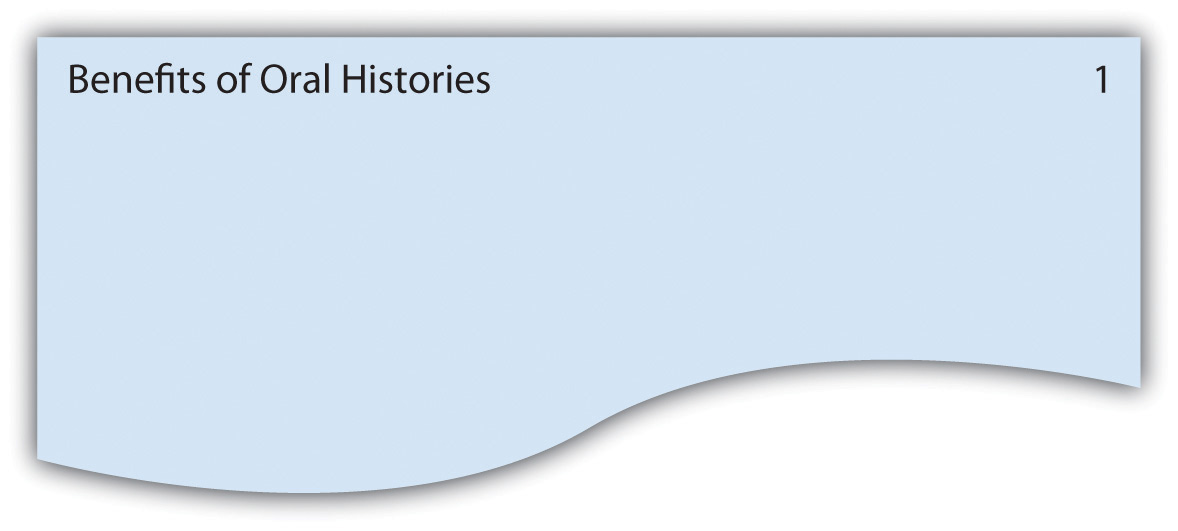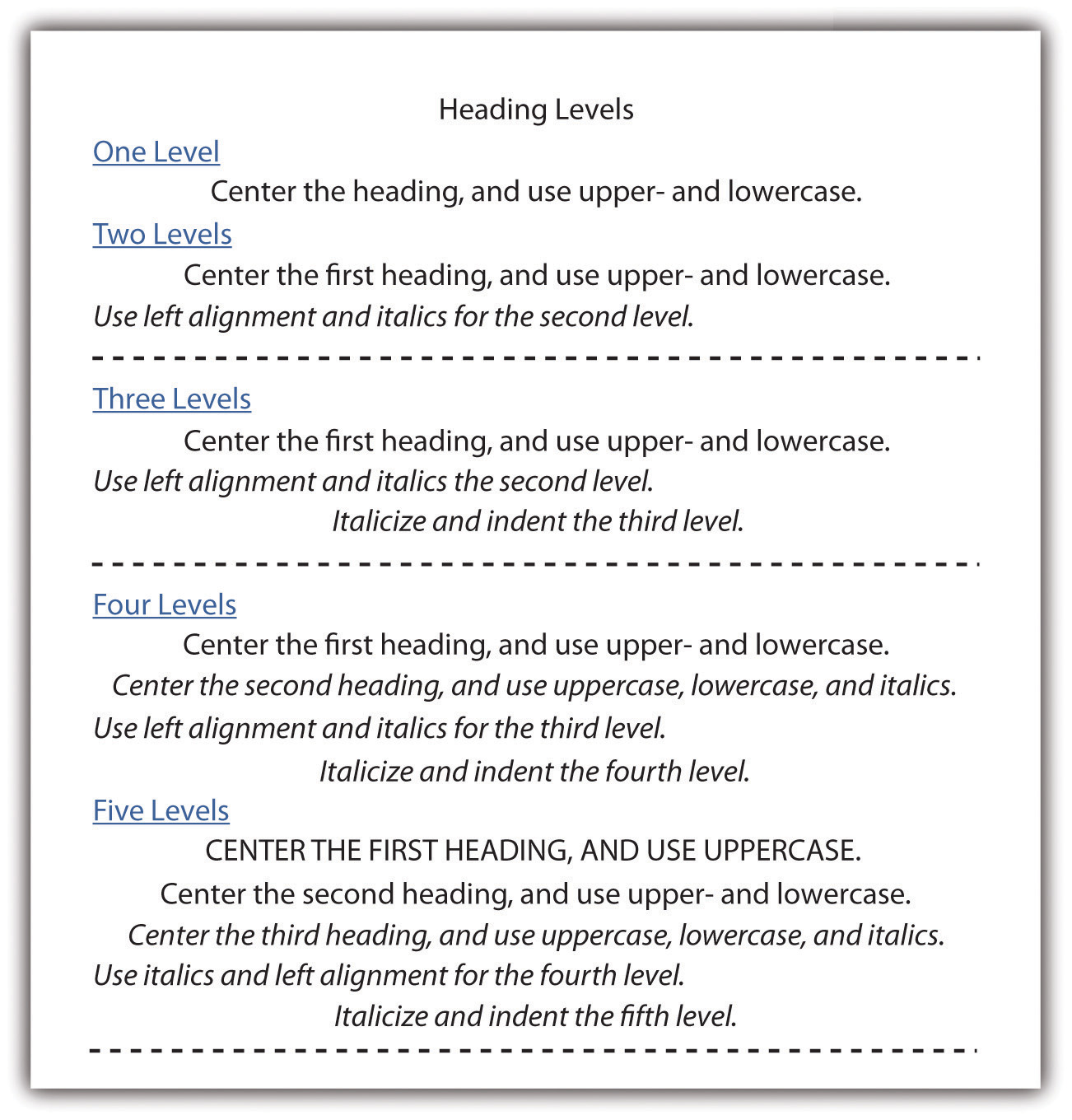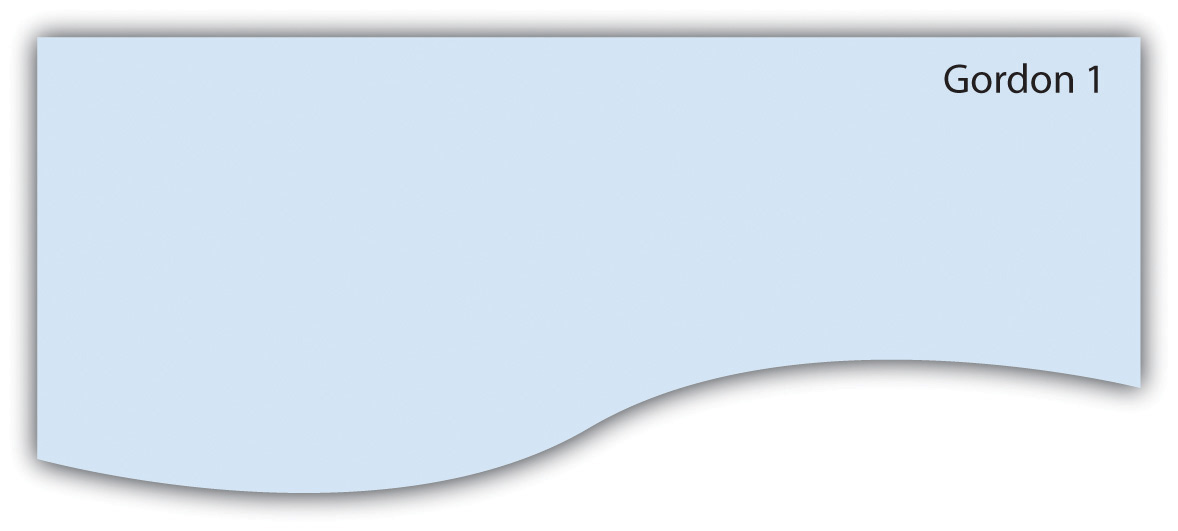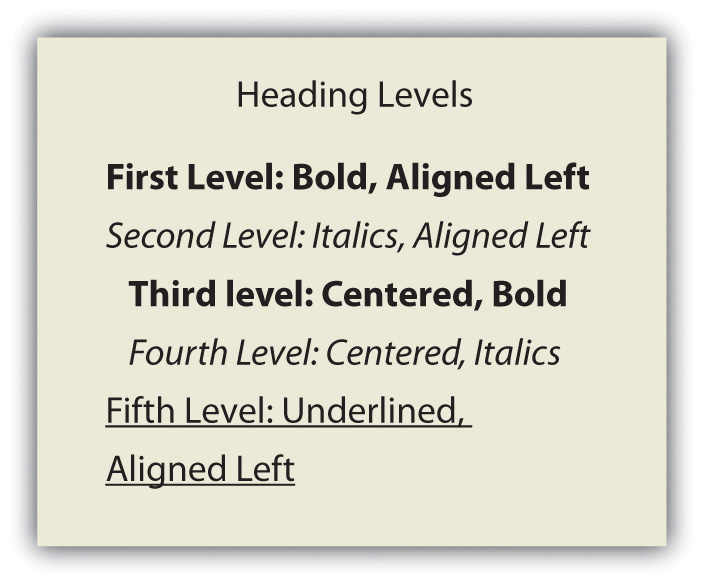This is “Choosing a Document Design”, section 10.1 from the book Writers' Handbook (v. 1.0). For details on it (including licensing), click here.
For more information on the source of this book, or why it is available for free, please see the project's home page. You can browse or download additional books there. To download a .zip file containing this book to use offline, simply click here.
10.1 Choosing a Document Design
Learning Objectives
- Be aware of general format choices.
- Know basic American Psychological Association (APA) format choices.
- Know basic Modern Language Association (MLA) format choices.
Chapter 9 "Designing" explores general and specific aspects of designing your written work, including margins, line spacing, indentation, alignment, headings, subheadings, fonts, visual text, images, charts, graphs, and text wrapping. In this section, you will learn about the document design requirements of two of the most common style sheets: those from the American Psychological Association (APA) and the Modern Language Association (MLA). (For more on citation and documentation formats from these and other style sheets, see Chapter 22 "Appendix B: A Guide to Research and Documentation".)
Following APA Document Design Guidelines
Order of Pages
APA requires the following set order of pages with each listed page on the list starting on a new page. If your paper does not require one or more of the pages, skip over those pages, but maintain the order of the pages you do use.
- Title page
- Abstract
- Body
- Text citations
- Footnotes (If used, these may be placed at bottom of individual pages or placed on a separate page following the citations.)
- Tables too large to place within the text body can be included in this position
- Figures too large to place within the text body can be included in this position
- Appendices
Title Page
A double-spaced title page should include the required information centered on the top half of the page. The title page information can vary based on your instructor’s requests, but standard APA guidelines include either the title, your name, and your college name or the title, your name, the instructor’s name, the course name, and the date.
Page Numbers and Paper Identification
Figure 10.1

Page numbers should be placed at the top, right margin one-half inch down from the top of the page. Across from the page number, flush left, include the title of the paper in a running head. If the title of the paper is lengthy, use an abbreviated version in the running head.
Margins
Make margins one inch on both sides and top and bottom.
Headings and Subheadings
Use double spacing with no additional returns. Before you decide where to place your headings, you have to decide how many levels of headings you will have. Typically, you will have two or three levels, but you might have as many as five levels. Keep in mind that the title does not count as a heading level, you should use the levels consistently, and you must have a minimum of two headings at each level. See Figure 10.2 for examples of formatting for different numbers of headings levels.
Figure 10.2

Fonts
Use 12-point Times New Roman.
Paragraph Indentations
Indent the first word of each paragraph from five to seven spaces.
Line Spacing
Double-space all text, including titles, subheadings, tables, captions, and citation lists.
Spacing after Punctuation
Space once after punctuation within a sentence, such as commas, colon, and semicolons, and twice after end punctuation.
Following MLA Document Design Guidelines
Order of Pages
MLA requires the following set order of pages with each listed page on the list starting on a new page. If your paper does not require one or more of the pages, skip over those pages, but maintain the order of the pages you do use.
- Body of text
- Notes
- Citation list
- Appendices
Title Page
No title page is needed unless your instructor requests it. Instead of a title page, MLA requires that you double-space your name, instructor’s name, course name or number, and the date at the top left. Next, continuing to double space, center the title on the page and start your text under the title.
Page Numbers and Paper Identification
Figure 10.3

Page numbers should be placed at the top, right margin one-half inch down from the top of the page. Before the page number, use your last name in a running head.
Margins
Make margins one inch on both sides and top and bottom.
Headings and Subheadings
Use double spacing with no additional returns. Use the heading formats in Figure 10.4 for up to five headings. If you have only two headings, use only the first two formats and so on.
Typically, you will have two or three levels, but you might have as many as five levels. Keep in mind that the title does not count as a heading level, you should use the levels consistently, and you must have a minimum of two headings at each level.
Figure 10.4

Fonts
Choose a font that is straight forward with no curly flairs or other “fancy” twists, such as Times New Roman or Arial. Use 12-point font.
Paragraph Indentations
Indent the first line of each paragraph one-half inch from the left margin by using the tab key (rather than spacing over).
Line Spacing
Double-space all text, including titles, subheadings, tables, captions, and citation lists.
Spacing after Punctuation
Leave only one space after all punctuation (both inside and at the end of sentences).
Key Takeaways
- In absence of set design requirements, make design choices that result in ample white space, value-adding images, a variety of images, consistent headings that help organize the content for the reader, contrast used to identify important aspects, detailed information being presented in appendices, and a clean overall look. (See Chapter 9 "Designing" for general guidelines.)
- Along with many other details on citation and documentation covered in Chapter 22 "Appendix B: A Guide to Research and Documentation", APA style sheet guidelines include a set order of pages, requirements for a title page, page number and page identification format, margin widths, heading formats, font choice and size, paragraph indenting, line spacing, and spacing after punctuation.
- MLA style sheet guidelines include specifics in the same categories as do the APA guidelines, with the exception of a title page since MLA does not require one.
Exercises
Read each guideline and identify it as a general guideline, an APA guideline, or an MLA guideline.
- Use ample white space.
- When using five levels of headings, the first level should be in uppercase.
- The first page should be the title page.
- The author’s last name is placed in the running head with the page number.
- Make sure your paper has a clean look.
- Indent the first sentence in a paragraph a distance of one-half inch.
- The paper title should be included in the header with the page number.
- Insert two spaces after every sentence.
- The fifth heading level should be aligned left and underlined.




